Iodine for tomatoes in the greenhouse
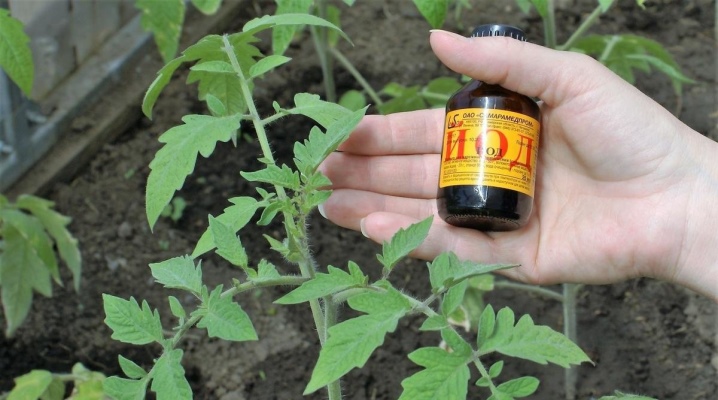
Many gardeners use iodine-containing preparations for fertilizing vegetable crops - this chemical element protects bushes from fungus, contributes to their rapid growth and development. However, the composition of the iodine tincture is quite aggressive, therefore, it requires extremely precise adherence to the application rates. Today we will tell you in more detail about effective recipes for feeding tomatoes based on iodine and the features of their presentation.
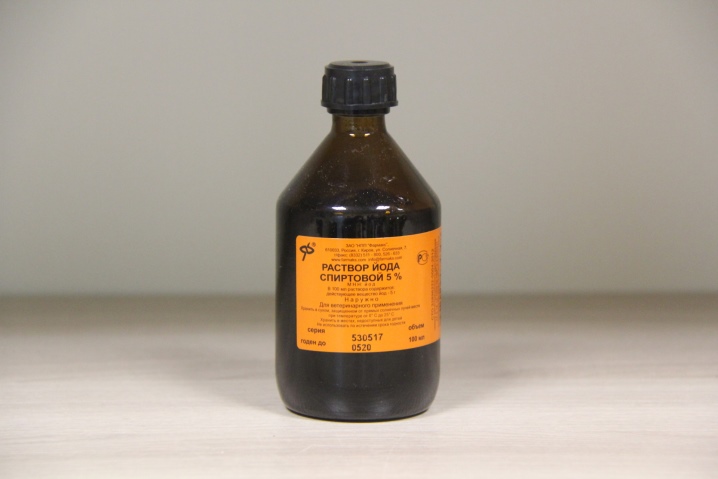
Iodine properties
Tomatoes are very big food lovers, so they often do not have enough traditional dressings. This culture gratefully responds to the use of folk recipes from iodine. It can be used both at the seedling stage and for fertilizing an adult plant.
Iodine-containing dressings are widespread in the late stages of the growing season for the prevention of fungal infections. In conditions of iodine deficiency, tomatoes suffer from late blight, the drug prevents the appearance of a black leg, gray rot and scab.
In addition, a trace element:
- provides fast growth and development of seedlings;
- optimizes metabolic processes in cells;
- promotes the appearance of ovaries;
- improves the taste of fruits;
- accelerates the ripening process.
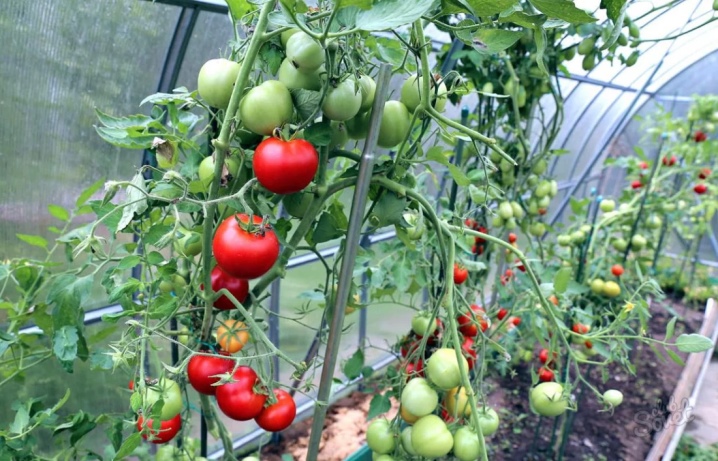
When is top dressing needed?
Lack of iodine affects the development of tomatoes in the most unfavorable way. External signs of micronutrient deficiencies are:
- weak thinned stems, pale leaves, sluggish shoots;
- weak immunity, susceptibility to diseases and parasites;
- frequent infection with apical and root rot, late blight;
- yields are low or absent altogether;
- poor resistance to heat, dry weather, temperature fluctuations and recurrent frosts.

Iodine-based solutions as fertilizer should be used according to a specific schedule. However, with an acute deficiency of a trace element, the bushes require unscheduled feeding. To determine the need for iodine, you should assess the condition of the tomato bushes as a whole, monitor the condition of the seedlings and the growth of fruits.
Fertilization is produced in two ways: by spraying the leaves or by introducing nutrient compounds into the ground, under the root. Root feeding is especially important during the seedling stage. Foliar is used as a first aid for plant pathologies or their depressed state.
Usually, both methods alternate, in which case the tomatoes will absorb iodine much faster.
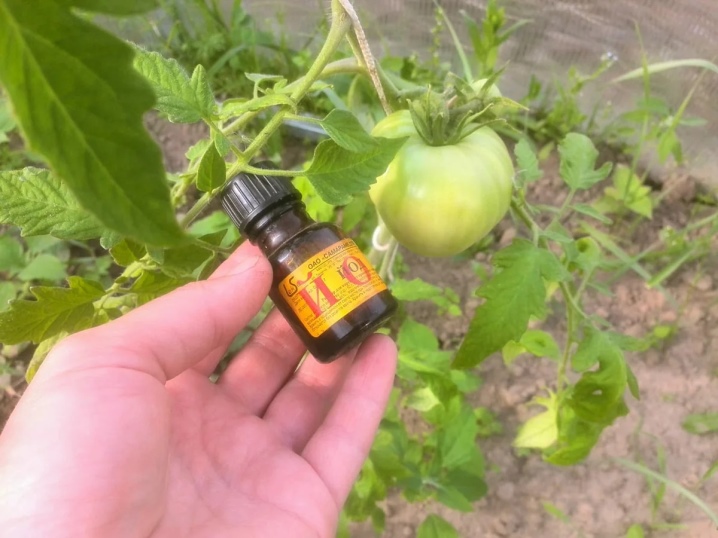
How to breed?
There are many recipes for fertilizers based on pharmaceutical iodine preparations. Let's dwell on the most popular of them. These compositions, according to gardeners' reviews, bring the maximum benefit to vegetables when grown.
Iodine and milk
Dairy products contain many amino acids useful for vegetables - they help to optimize metabolism in green tissues, accelerate the absorption of micronutrient and macroelements. Root dressings based on milk and iodine enrich the soil, while foliar dressings have a beneficial effect on tomato bushes and fruit formation.
The tandem of milk and iodine covers the green leaves with a film. It prevents the penetration of fungal spores and insect punctures, thereby protecting the plant. It is not difficult to prepare fertilizer - for this you need to mix 1 liter of milk, half a bucket of water and 25 drops of iodine.The solution is thoroughly mixed, poured into a spray bottle and the bushes are treated from all sides.
Tip: The greatest effect is obtained by using a fine spray. It creates a light cloud of small drops - in this case, the drug is distributed over the leaves more evenly.
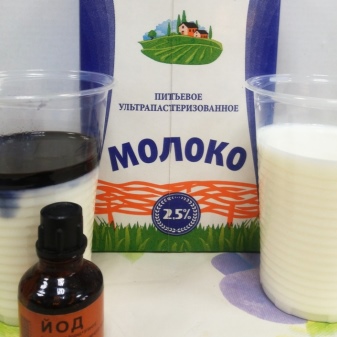
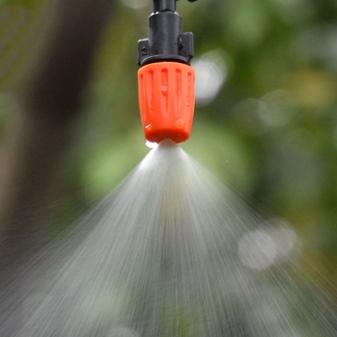
Iodine and potassium permanganate
These components have pronounced fungicidal properties, therefore, feeding has a protective and medicinal function. The composition is especially effective at the time of the threat of late blight. To prepare a working solution for fertilizer, 25-30 drops of pharmaceutical iodine are diluted in 10 liters of water and a pinch of potassium permanganate crystals are poured. The composition should be pale, as concentrated solutions can burn the root system.
Before processing, you should uproot all weeds, remove the lower leaves on the tomato bushes and loosen the substrate. A composition based on permanganate and iodine is used to irrigate bushes every 7-10 days. Top dressing is done early in the morning, so that by the evening the bush can dry out completely.
Before watering, the soil around the seedlings can be powdered with wood ash - this substance has a detrimental effect on late blight, the complex effect creates maximum protection for the bushes.
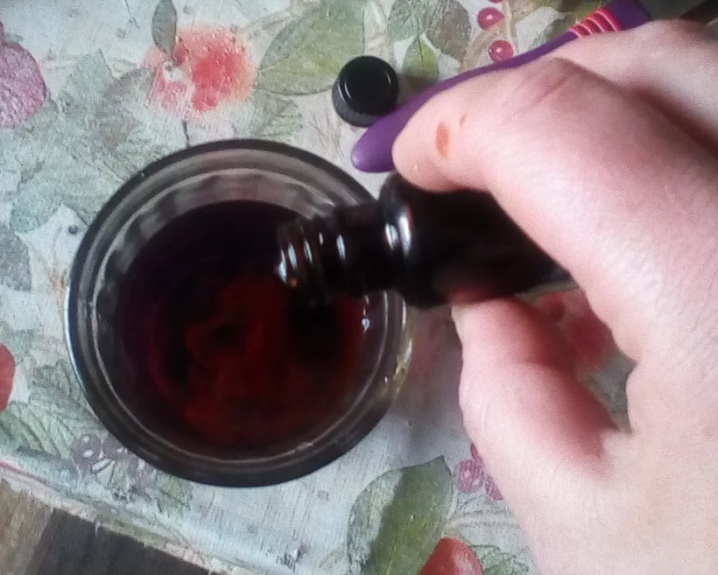
Iodine and ash
A mixture of iodine and wood ash is used after the formation of ovaries, since at this stage the tomatoes need potassium. The main advantages of such feeding are its natural composition, low cost and availability. In addition to potassium, ash contains calcium, phosphorus, selenium and many other useful components.
To draw up a working solution, 1 glass of wood ash is diluted in 10 liters of water, insisted for a day and 30-35 drops of pharmaceutical iodine are mixed. If you plan to carry out foliar spraying, then the volume of iodine should be halved. Before fertilization, the soil is moistened, the feeding rate is 1 glass per tomato bush. This treatment must be repeated every 10-14 days.

Iodine and serum
To strengthen the immune system, vegetables are often poured with milk whey. It contains microorganisms that inhibit the growth of pathogenic microflora. Getting on the leaves, it creates a protective film, and already from it the cells absorb all the necessary trace elements. Lactose present in fermented milk products repels insect pests. The mixture of iodine and whey provides reliable protection against powdery mildew, rust, leaf spot, scab and fusarium.
For the manufacture of nutritional supplements, 3-4 liters of water are mixed with 1 liter of whey and 10 drops of iodine are injected. All ingredients are mixed and poured over the root.
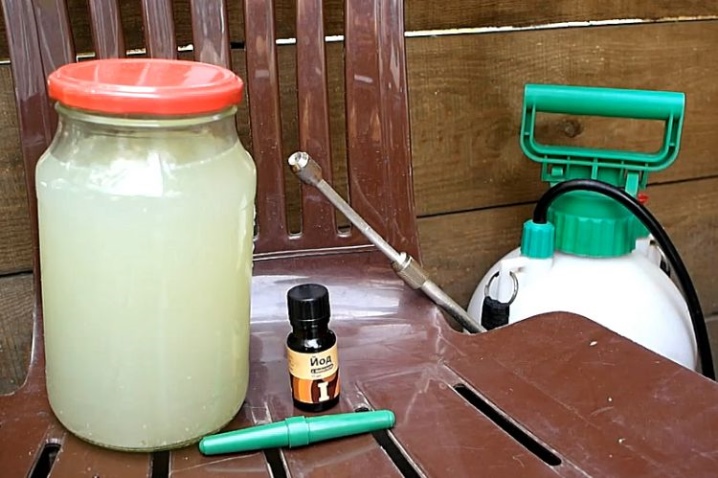
Iodine and greens
The composition based on brilliant green and iodine has a powerful antimicrobial effect, therefore it is used when there is a threat of damage from late blight and other fungal pathologies. Both drugs are antiseptics, so in tandem they work as efficiently as possible. Besides, such feeding allows you to make up for the deficiency of potassium, fluorine and copper. Usually, the lack of these trace elements is indicated by blanching of the leaves, spots on the leaf blades and thinning of the shoots. For the treatment of fungal infections, a solution is made of 30 drops of a pharmacy tincture of iodine and 50 ml of greenery dissolved in a bucket of cool water. For preventive spraying, the concentration should be 5 times lower.
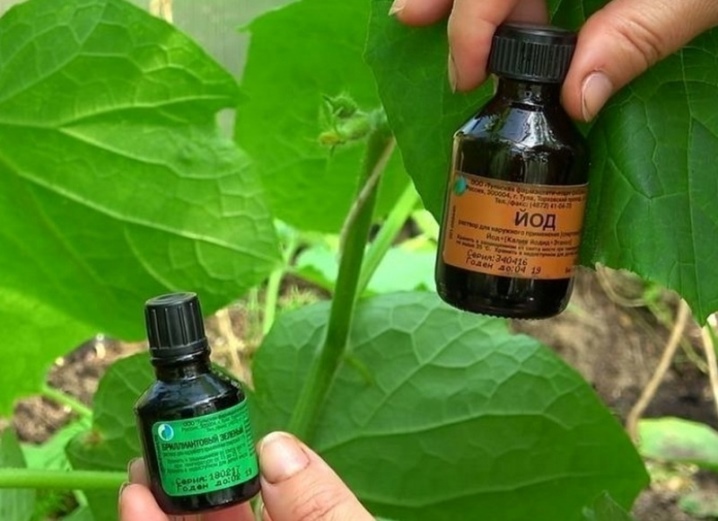
How to feed properly?
The rules for applying dressings based on iodine preparations vary depending on the growing season of the bush and its condition. If the tomatoes show symptoms of the disease, it is better to spray them, if you think that the culture requires nutrition, fertilizer is added at the root.
Seedling
The very first treatment with iodine is best done before planting, by treating the seedlings in a weak solution.
The second time iodine is needed after the appearance of 2-3 true leaves. At this moment, watering gives a greater effect.
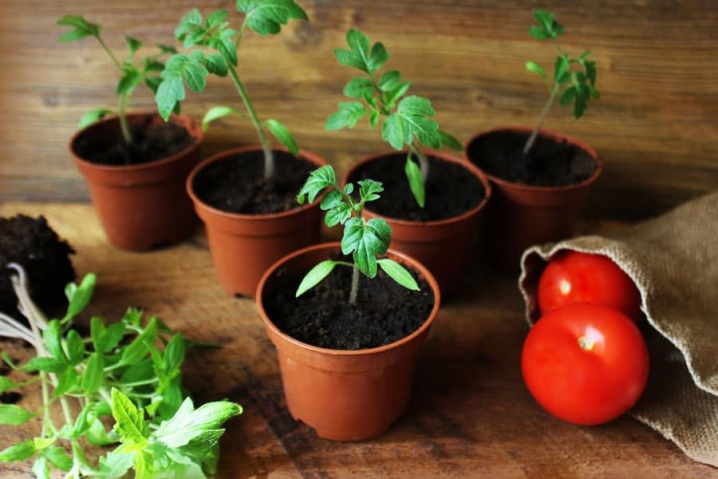
After disembarking
Any top dressing with the addition of iodine is carried out in a couple of weeks and after transplanting seedlings into open ground. You don't need to do this earlier: the plant needs time for the seedlings to grow stronger, and the root system takes root in the ground. At this stage, it is important to create effective protection for plants against fungal diseases, ticks, slugs, Colorado potato beetle and caterpillars, as well as provide them with all the necessary micro and macro elements.
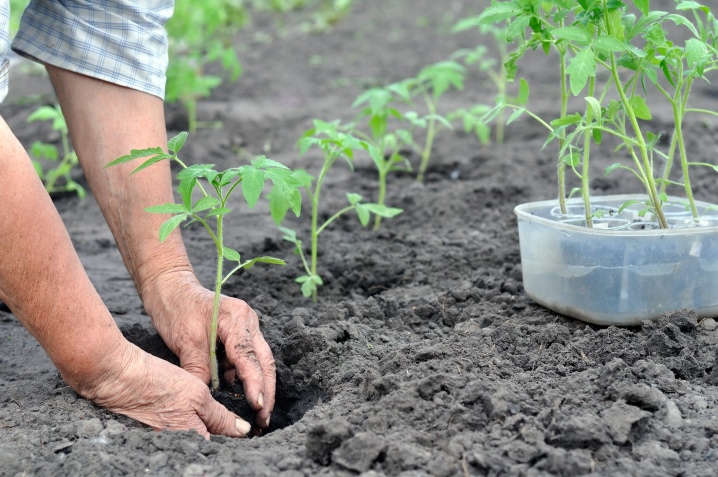
During flowering, for the ovary
At the stage of flowering and ovary formation, tomatoes become vulnerable, since they devote all their strength to setting fruits. At the very beginning of flowering, plants need to be fertilized with root dressings. At the end of flowering, it is better to spray the plants with a composition of iodine and dairy products.
With any suspicion of the appearance of diseases, additional processing can be carried out with formulations of iodine with the addition of green leaves or potassium permanganate.
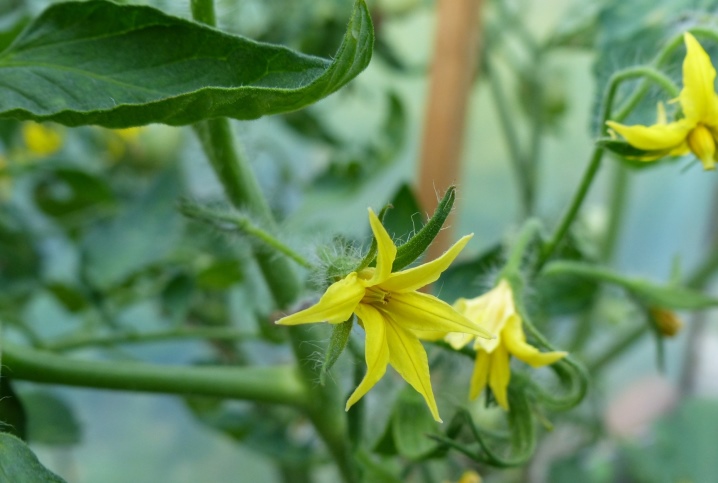
During fruiting
During fruiting, tomatoes are fed with iodine-based formulations to ripen quickly. The bushes are fed 2-3 times at intervals of 7-10 days. At high humidity, formulations of iodine and whey give the greatest effect.
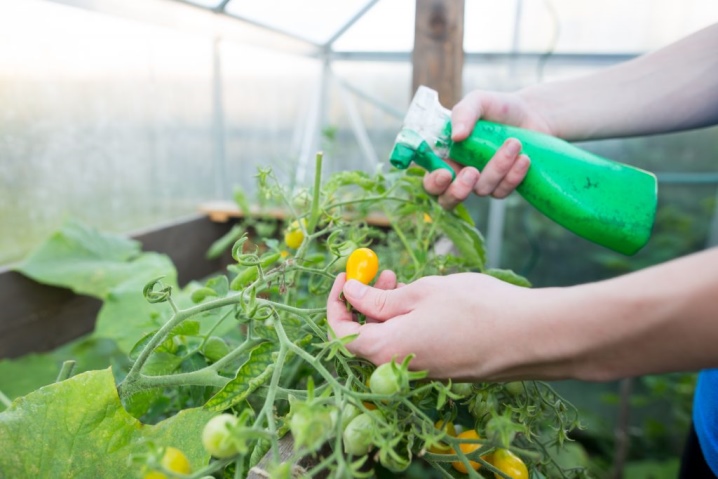
Watering
The simplest fertilization method is root dressing. It is possible to irrigate plants with iodine-containing compounds both in open areas and in greenhouses. However, the effect can be achieved only if the following conditions are met:
- lack of direct UV rays;
- watering in the evenings or early in the morning;
- calm and dry weather, otherwise the mixture will simply drain from the leaves;
- the optimal temperature background is + 18-20 degrees.
Using top dressing with iodine, it is very easy to make a mistake with the dosages and thus harm the root system.
The pharmaceutical preparation potassium iodide is a concentrated product and can easily burn the roots when watering and destroy plantings.
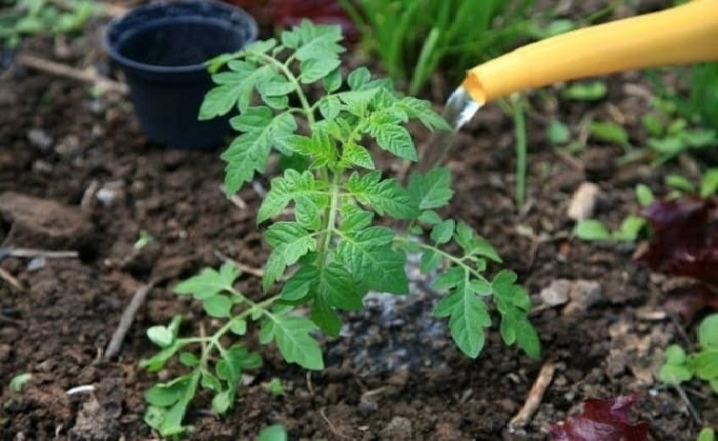
Spraying
Spraying with iodine-based solution is still gaining popularity. It involves the creation of an artificial fog saturated with iodine ions and other nutrients. To perform spraying, a mother liquor is prepared, distributed over the bushes using a spray bottle or a regular broom. Subject to all dosages, this method is absolutely safe for both young seedlings and mature plants.

How to use it to fight disease?
The use of iodine preparations gives a high effect to prevent the appearance of root and other types of rot, tobacco mosaic virus, fusarium wilting and brown spot. Iodine has established itself as one of the most effective remedies for protecting tomatoes from late blight. - this is one of the most dangerous diseases of culture. If untreated, the disease spreads quickly and in the shortest time destroys up to 80% of the crop. The first to indicate the disease is the appearance of dark gray spots on the back of the leaf plates, soon the leaves turn brown, and the fruits begin to turn black.
Usually, such a disease develops in conditions of high humidity and with excessive liming of the soil. Most often, weak plants that lack micronutrients are affected.
It is impossible to treat the affected bush, but it is possible to prevent infection of neighboring tomatoes - for this they are sprayed with a solution of iodine. Its fumes kill the spores of the fungus and prevent them from growing.

Why is iodine hanging in the greenhouse and how to do it correctly?
To improve the growth and formation of culture in greenhouses, you can hang containers with iodine in them. By evaporating, this agent fights dangerous fungi that often develop in damp conditions. In addition, its evaporation increases the number of ovaries and, as a result, yield. There are several rules to follow when using this method:
- you should tie up iodine in the greenhouse at the very beginning of summer;
- for a greenhouse with an area of 8 sq. m. 6 bubbles of iodine are suspended;
- containers are placed around the perimeter, the distance to the garden must be at least 1 m;
- the drug should be poured into the bottle from time to time, as it constantly evaporates.
Keep in mind that people cannot stay for a long time in a greenhouse where bubbles with iodine are hung, since large volumes of fumes can be dangerous to the human body. Do not use iodine in polycarbonate greenhouses. Plastic enters into a chemical reaction with it, as a result, it quickly ages and becomes extremely fragile. This leads to the fact that after 5 years, polycarbonate greenhouses may completely lose their characteristics.
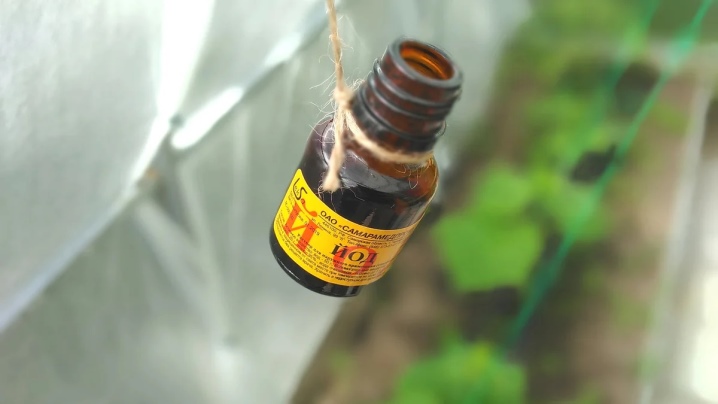
Precautionary measures
When working with iodine-containing preparations, safety precautions should be followed.
- Use of personal protective equipment - rubber gloves, glasses and a respirator.
- The working solution is prepared outdoors or in a well-ventilated area.
- A single ingress of iodine vapors into the respiratory tract of a person may cause slight discomfort, but does not pose a health hazard. But a second hit is already fraught with a risk to life.
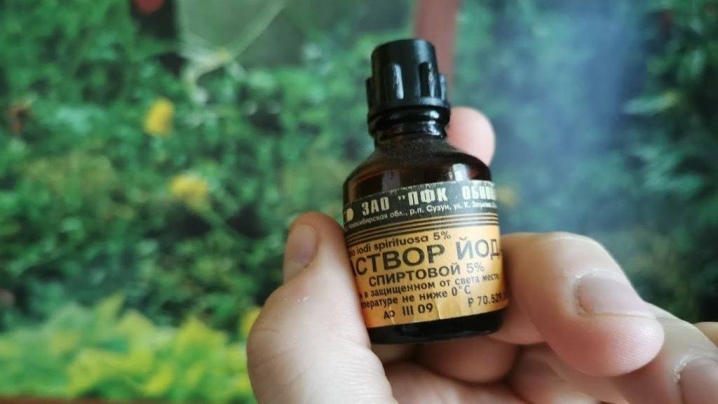
See the video about the use of feeding tomatoes with iodine.













The comment was sent successfully.